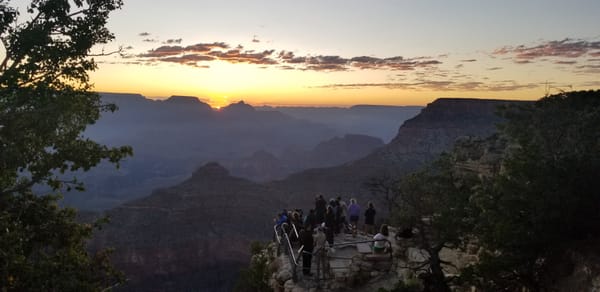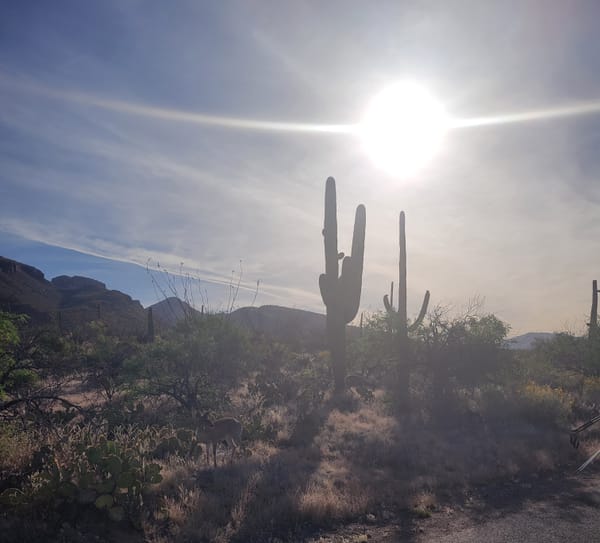Tucson’s Batty Spectacle

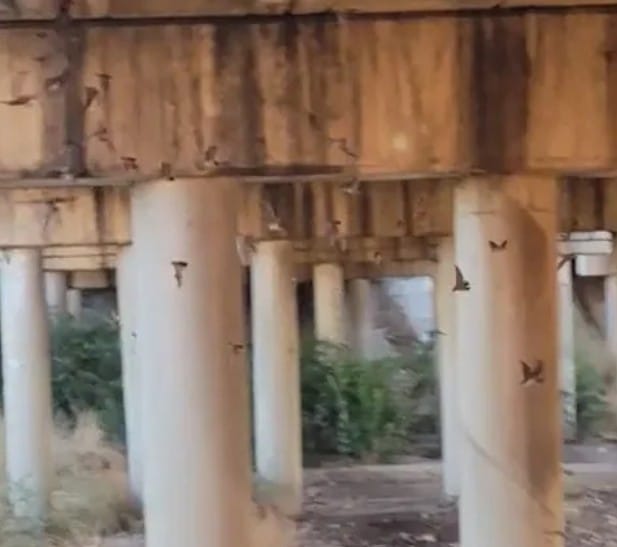
As the sun gets ready to set in the western sky, the Broadway bridge over Pantano Wash becomes center stage for a natural spectacle. Thousands of Mexican free-tailed bats pour out from beneath the bridge and rise into the night. This is one of Tucson’s most underrated wildlife experiences.
Meet the Bats
The bats that live under the Broadway bridge are Mexican free-tailed bats, a species known for their speed, agility, and massive colonies. They arrive in Tucson around late March or early April after migrating north from Mexico. Most stay through the summer and early fall before heading back south as temperatures drop.
These bats are small, usually no longer than four inches from head to tail. Their bodies are light, weighing less than an ounce. When at rest, they cling to rough surfaces using sharp claws on their feet. Their long, narrow wings allow them to fly fast and turn quickly in the air.
Despite their small size, they make a big impact. At the Broadway bridge, the roost can include up to 20,000 bats during peak season. The space beneath the bridge provides warm, tight crevices that mimic the natural caves these bats prefer. During the day, the bats rest in groups and keep their young safe in dark corners. At night, they emerge to hunt. These bats are not aggressive and have no interest in people. They do not dive at your head or try to land on you. In fact, they tend to avoid humans entirely. When you watch the fly-out from the bridge, you will see them spiral upward into the sky in tight, smooth patterns.
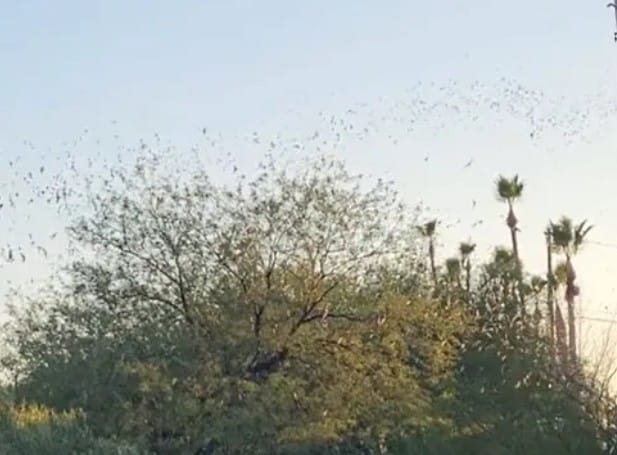
When to See Them
The best place to watch this bat colony is from the sidewalk or path near the Broadway bridge at Pantano Wash, on Tucson’s east side. The bridge is located in a developed part of town, with nearby stores and plenty of parking. You can walk or bike to the bridge using The Loop, a paved trail that follows the wash. Many people stop here in the evenings just to see the bats fly out.
You do not need special equipment or a tour guide. All you need to do is show up and wait. The bats usually emerge right before sunset. In the peak of summer, that means sometime between 7:15 and 7:45 p.m. It is best to arrive at least 20 to 30 minutes before sunset so you do not miss the start. The first few bats come out slowly. Then the rest follow in waves, and the sky begins to fill. The fly-out lasts for several minutes and if the weather is calm, you can hear the soft flapping of wings. If you listen closely, you might hear the faint chirping sounds they use to locate prey in the dark.
There are no signs marking the bat colony, but you will know you are in the right place if you see the Batty Biker sculpture nearby. It sits along the trail just north of the bridge and adds a little humor to the setting. More on that below.
The Batty Biker
A few steps north of the bridge on the multi-use path, you will see a strange and fun statue. It is a bat on a recumbent bike, made of steel. It serves as a marker for this unique bat-watching spot. Tucson has several public art pieces like this near known bat bridges. They help bring attention to the bats without disturbing them.
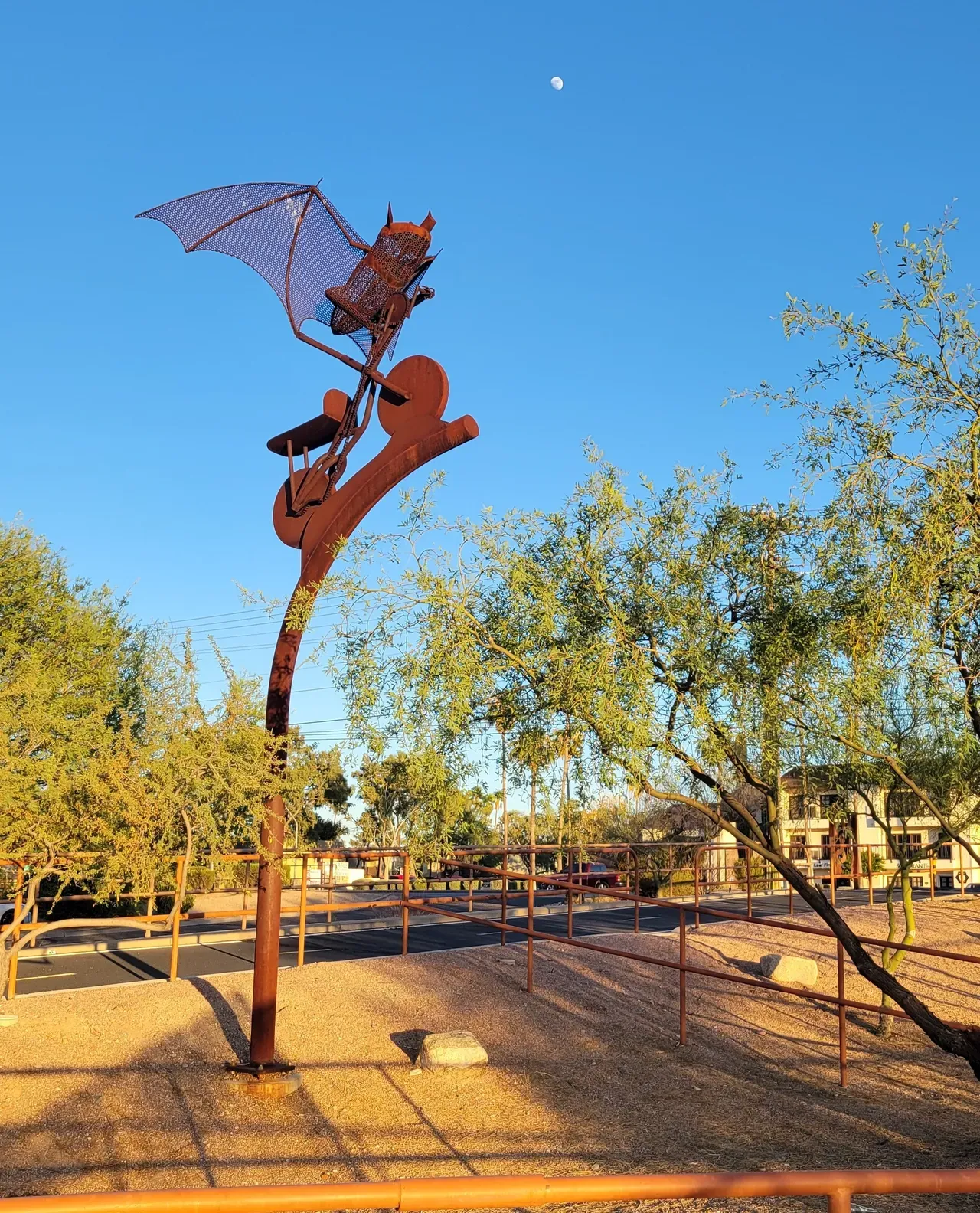
A Good Way to End the Day
Watching bats swirl into the desert sky is one of those things that makes Tucson feel wild and alive. The sculpture nearby adds a little humor and creativity. If you are looking for something unusual to do after sunset, this is a quiet and impressive option. You do not need to hike, spend money, or go far. Just bring a chair, maybe a friend, and wait. The bats do the rest. It is free, it is real, and it is something you will not see in most cities.


